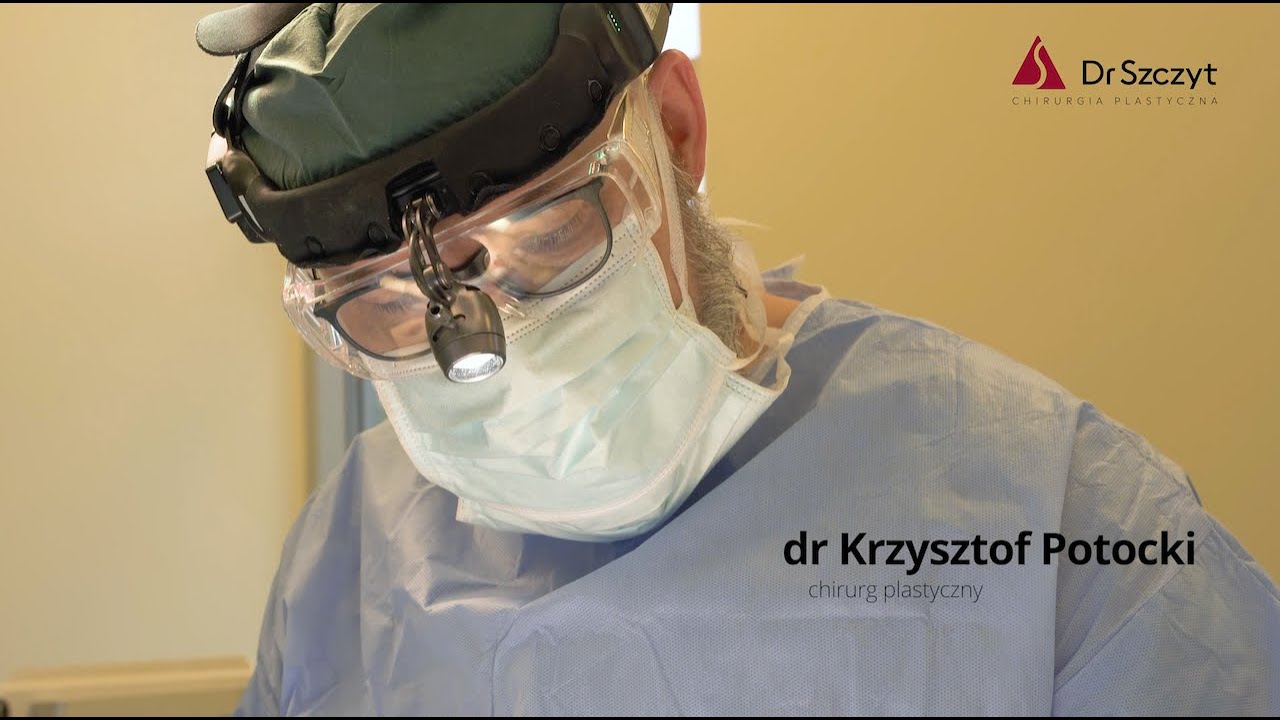Breast augmentation with implants - how does the procedure and recovery go?

Breast augmentation surgery is one of the most commonly performed plastic surgery procedures. It is decided not only by women who are not satisfied with the shape of their breasts, but also by patients for reconstruction purposes, such as after a mastectomy. What should be kept in mind before the operation and during recovery? How does breast augmentation proceed?
Breast augmentation - how to choose a doctor?
Breast augmentation surgery should be performed by a plastic surgeon with extensive experience. The procedure requires careful planning and precise execution. Choosing the right surgeon from among about 200 specialists in Poland is the most important step in the process of taking care of your health and appearance. It is important to find a doctor you trust. The clinic also matters - when choosing one, you should be guided by its quality and, above all, your safety.
How long does it take from the consultation to the breast augmentation procedure?
Between the consultation and surgery, the patient should have time to think calmly about her decision, as well as address any concerns she may have with the clinic staff. This is also the time for additional tests (including those that need to be repeated), as well as to take care of things she won't be able to do after surgery. It is important for the patient to prepare herself and her surroundings for the recovery period.
Read also: Small breasts - when to decide to enlarge them?
What tests should be done before breast augmentation?
Among the recommended tests before surgery, blood count, blood clotting and sugar level determination are indicated. It is also recommended that the blood group be determined twice - a repeat test helps eliminate the risk of error and confirm the result. In the situation of a diagnosed chronic disease, additional consultation with a specialist is ordered. In any case, it is necessary to perform Ultrasound of the breast.
Surgeries are not performed on patients in poor health. This is dictated by their safety, hence one should never hide one's ailments.
What kind of anesthesia is used for breast augmentation?
Breast surgery (augmentation, reconstruction) is always carried out under general anesthesia, hence an anesthesiological consultation before the procedure. Anesthesia requires the administration of muscle relaxants and painkillers, which enable the doctor to perform the procedure safely. The patient's safety is supervised by a team of anesthesiology specialists (doctors, nurses), so in our clinic complications are extremely rare.
Which implants to choose for breast augmentation?
The decision on the choice of implants is made by the doctor together with the patient (in terms of shape, round and anatomical implants are distinguished). First of all, the implants must fit the posture, the shape of the natural breasts, the width of the chest, the degree of sagging of the breasts, the amount of muscle coverage and - of course - the patient's expectations.
The doctor decides on the type of skin incision during the procedure:
- Subpectoral incision (in the submammary fold) - is made on the line connecting the lower part of the breast to the chest. Its advantage is that it is placed in such a way that the scar is hidden in a hardly visible place.
- Periareolar incision - is made along the line outlining the so-called areola of the nipple. In this type of incision, the scar is hidden at the transition of the dark areola of the nipple to the light color of the skin.
Other skin incisions that may be made during breast augmentation surgery include:
- Underarm incision - it is performed in the natural folds of the skin under the armpit. The scar is completely hidden.
- Incision in the navel - the surgical procedure is performed using an endoscope, and the incision is made at the edge of the navel, from where the implant is advanced to the breast through a special tunnel created in the abdominal fatty tissue.
Read also: Which breast implants to choose - round or anatomical?
How to prepare for breast augmentation surgery?
You should report to the clinic in the morning on the day of the procedure, fasting (even chewing gum is not recommended, which increases the amount of gastric juice that can cause choking during intubation). You should bring with you all the necessary documents (especially test results) and an ID card, as well as medications you are taking on a regular basis (which you need to inform the medical staff about).
You can still talk to the surgeon performing the operation and the anesthesiologist before the procedure. The necessary consents must also be signed. After completing the paperwork, the patient is sent to the ward, where she must take a bath. Photographs of the breast are also taken, which are used later to evaluate the outcome of the operation, and the doctor marks a so-called "map" of the procedure on the body. Before going to the operating room, tranquilizers are administered.
The first dose of antibiotic is also administered at the time of anesthesia, and subsequent doses are applied after surgery. Antibiotic therapy is usually not continued after discharge home, unless the doctor advises otherwise.
Read also: Beautiful breasts after pregnancy and breastfeeding - what to do to get them back?
How does the breast augmentation surgery go?
After administering anesthesia, the surgeon makes an incision on the skin (in the subpectoral fold or around the areola) to get under the pectoralis major muscle. A so-called "lodge," or pocket for the implant, is created, which must not be too large so that the implant does not move and the blood vessels around it remain closed. The tissues and skin are then sutured together. Breast augmentation surgery takes about 1-1.5 hours. After its completion, the patient is transported to the recovery room.
Breast augmentation surgery does not require a long stay in the hospital. Most often, the very next day you can, accompanied by a loved one, leave the clinic.
Do the implants come with a warranty?
At our clinic, we choose implants with a lifetime guarantee - they can be replaced in case of spontaneous rupture that is not related to mechanical damage, regardless of the time that has passed since the procedure was performed. In such a situation, the patient is also entitled to a partial reimbursement of the cost of the additional procedure. Implants are also replaced if there is a significant shrinkage of the connective tissue capsule, resulting in pain and worsening of the aesthetic effect. Each patient is informed of all details of the operation, including the applicable guarantees, prior to the procedure.
How should recovery from breast augmentation proceed?
Immediately after the operation, the incision sites are protected with bandages, and a special bra is put on the breasts, which is tighter than a traditional bra, as it is meant to stabilize the implants and prevent them from moving. It should not be removed until the stitches are removed, which is for about a week after the procedure. The post-surgical bra should be worn around the clock for another month. The exception, of course, is when the underwear is washed and dried.
What to keep in mind in the following weeks?
- During the next 3 months, you need to stop wearing lace bras with underwire.
- For 4-5 weeks after the procedure, do not play sports, lift heavy objects and lift your arms. Do not touch the breasts during close-up intercourse. Sunbathing is also discouraged.
- Until 2 months after breast augmentation, do not sleep on your stomach.
Read also: In what situations is it a good idea to reduce the bust?
Can I breastfeed after breast augmentation surgery?
Yes, you can breastfeed after breast augmentation surgery. In most cases, the mammary gland is not affected because the implant is placed through the submammary fold. If the implant is inserted through a cut around the areola, only part of the gland is cut, which usually does not affect the ability to feed.
What should you know before breast augmentation surgery?
Thyroid diseases are not a contraindication to surgery, but it is important to remember that it is a considerable burden on the body, which, with unregulated hyperthyroidism, can lead to a life-threatening condition. To minimize this risk, tests are performed to determine hormone levels.
What else to keep in mind?
- Diagnosed coronary artery disease requires consultation with a cardiologist.
- Blood clotting disorders, as long as the patient is under the care of a hematologist, are not a contraindication.
- Fresh inflammation or infection may result in postponement of the surgery date.
- Active herpes is a contraindication to the surgical procedure.
- Surgery is not performed during the first 3 days of menstruation, as this increases the risk of hematoma formation, which would require another surgical intervention.
- Two weeks before breast augmentation, preparations containing salicylic acid (such as aspirin) should be discontinued, as they disrupt the blood clotting mechanism. One week before the operation, dietary supplements and excessive amounts of garlic should not be taken. It is also advisable to stop stimulants, including alcohol and cigarettes.
The decision to undergo breast augmentation is a step towards improving your appearance and self-confidence. At our clinic we provide a personalized approach, guarantee professionalism and the highest safety standards. Experienced surgeons discuss in detail all aspects of the operation, answer every question and dispel doubts. Thanks to modern technologies and proven methods, our patients are assured that they are in good hands.
FAQ
How long does it take to recover from breast augmentation?
Recuperationafter breast augmentation surgery takes about 6 weeks. During this time, you need to wear a special bra, do not lift anything or move heavy objects. She can return to office work after 3 weeks.
How long does one recover from breast surgery?
Thisis a very individual issue, but as a rule, women feel much better after just one week and are becoming more active. Pain and discomfort disappear, but it is still necessary to refrain from intense exercise and lifting.
When can I return to work after surgery?
The time it takes to return to professional duties depends on the type of work performed and how the patient feels. It usually ranges from a few days to a few weeks.
When are the results of breast augmentation visible?
We always evaluate the effects of surgery after one year.
How long do the results of a breast augmentation procedure last?
The effects of the treatment are permanent, but may change slightly over time due to natural aging processes.
Are there any complications after breast augmentation surgery?
Like any surgical procedure, breast augmentation involves some risk of complications, such as infection, bleeding, hematoma formation, breast asymmetry or loss of sensation. It is worth remembering that the aforementioned complications are treatable. If you experience worrying symptoms, you should consult a specialist.
Worth watching





















